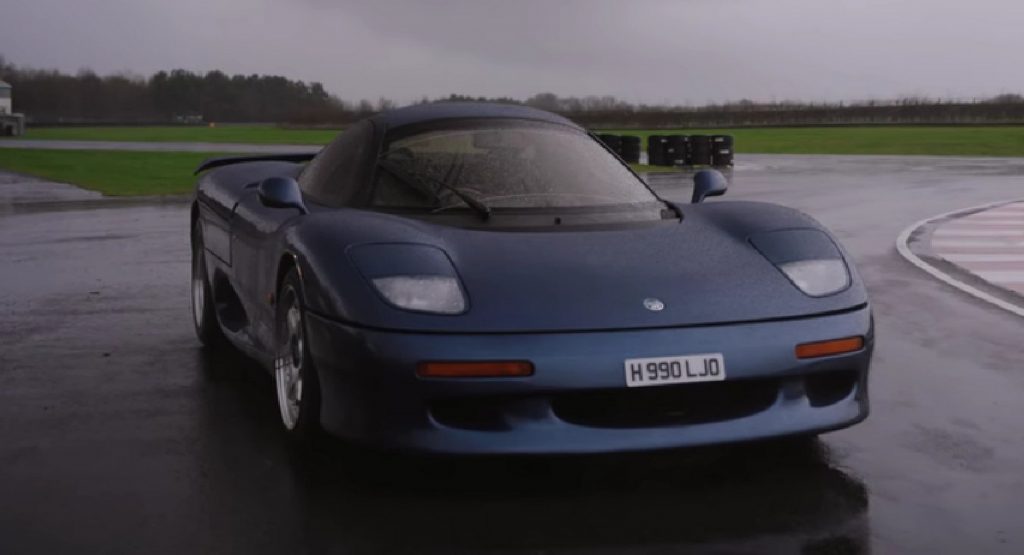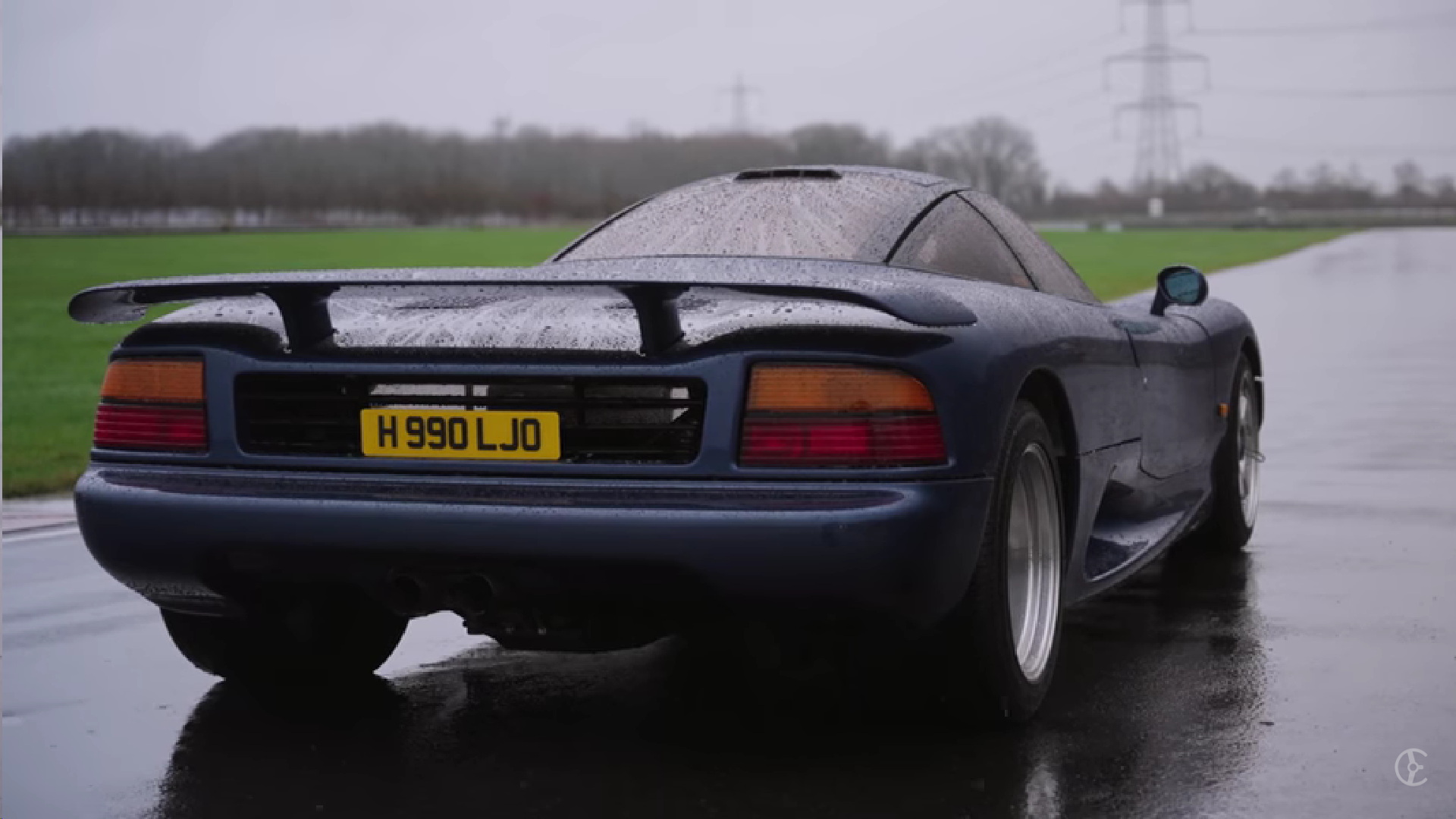The story of the Jaguar Sport XJR-15 is a little complicated. Based on the Jaguar XJR-9 race car that won Le Mans in 1988, and intended as a celebration of that car, the supercar was actually designed by Jaguar Sport, a subsidiary of Tom Walkinshaw Racing, which ran the racing team.
To appease Jaguar, which was developing the XJ220 at the time, the first 17 cars were built for a one-make racing series and earned a reputation for being a bit of a handful. Indeed, Jeremy Clarkson once famously called it the worst-handling car… in the world.
According to Henry Catchpole, though, it might not deserve that reputation. For one thing, much of the bad handling came down to the Bridgestone tires that apparently went off quicker than a Pirelli F1 tire, making the car quite a handful.
The XJR-15 was also powered by a naturally aspirated V12 engine that made 450 hp (335 kW/456 PS) and 420 lb-ft (569 Nm) of torque. That might not quite sound monstrous by today’s standards but the car weighed just 1,050 kg (2,315 lbs) and was derived from a Le Mans winner, so it was a proper supercar in its day.
Although the roadgoing version did have a few concessions to comfort, such as a synchromesh five-speed manual instead of a straight-cut six-speed, it’s hardly comfortable. The exposed carbon interior, meanwhile, is hardly the height of luxury. But did it really deserve its reputation?
“The worst handling car in the world? Definitely not, I’ve driven far worse than this,” says Catchpole despite the pouring rain on his day with the car. “The steering is perhaps its biggest asset because it’s so full of feel, which, in turn, gives you real reassurance.”
He presumes, though, that the experience of owning the car would be like owning a tiger. You could never really trust it, no matter how long you’d known it, because of its wild nature.





